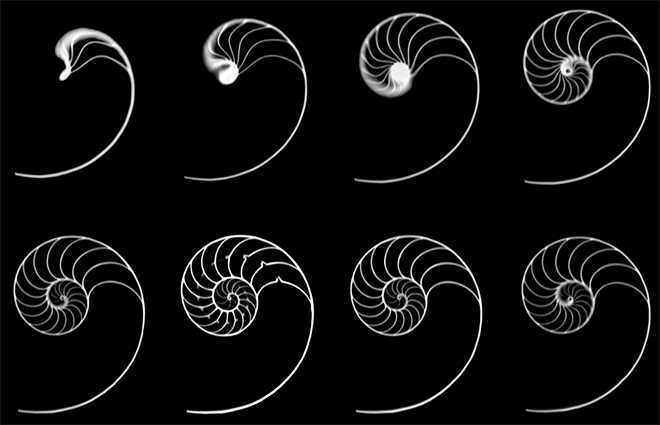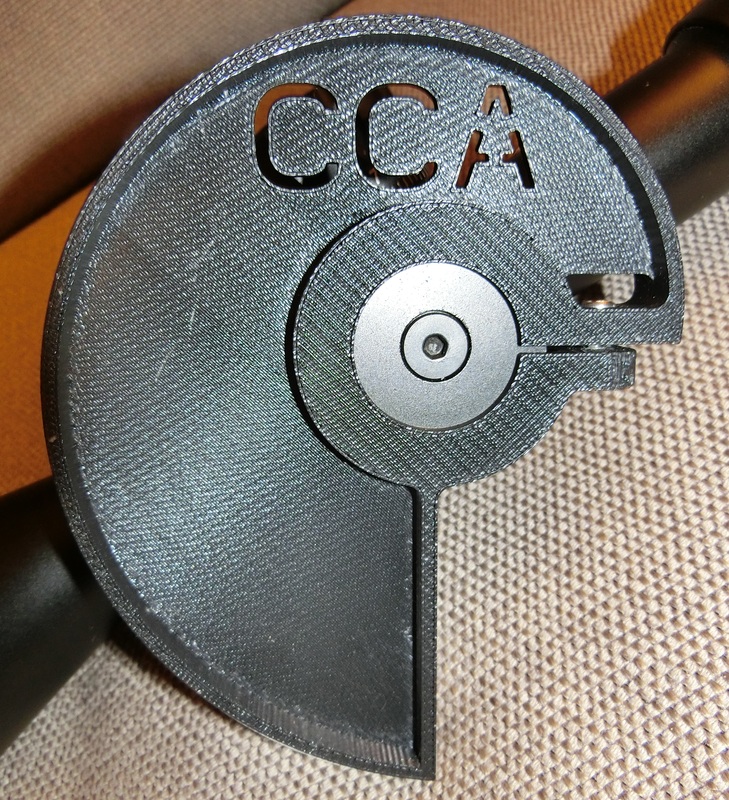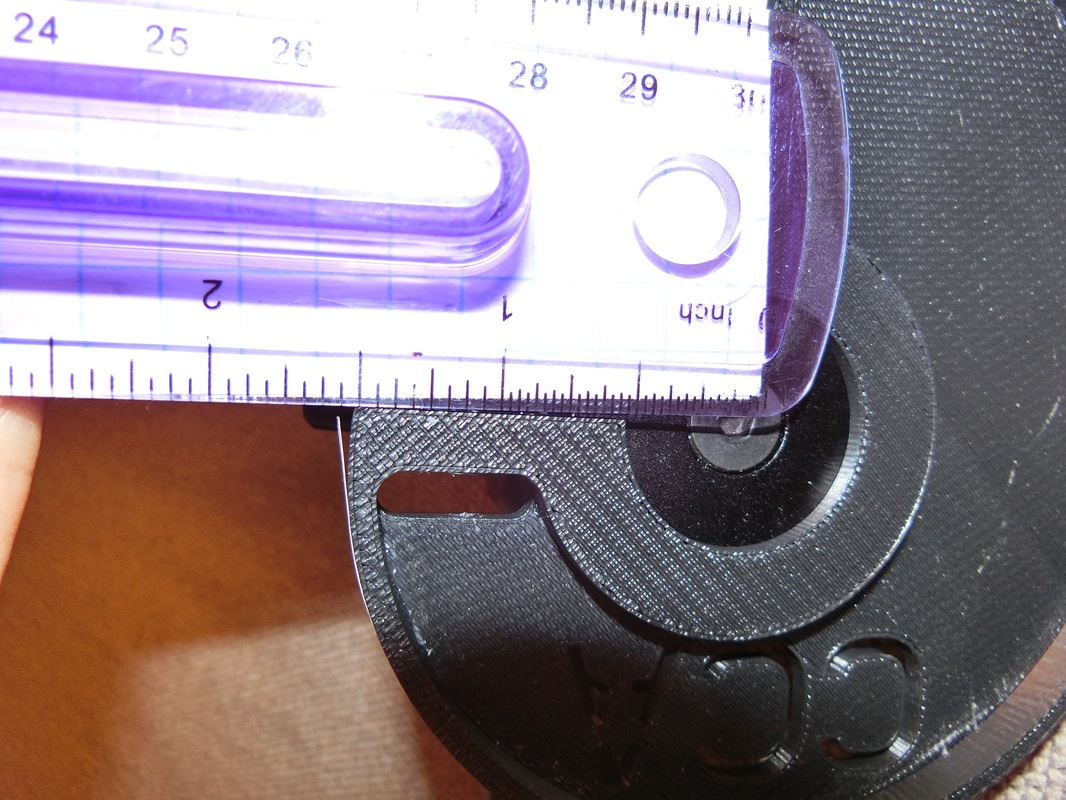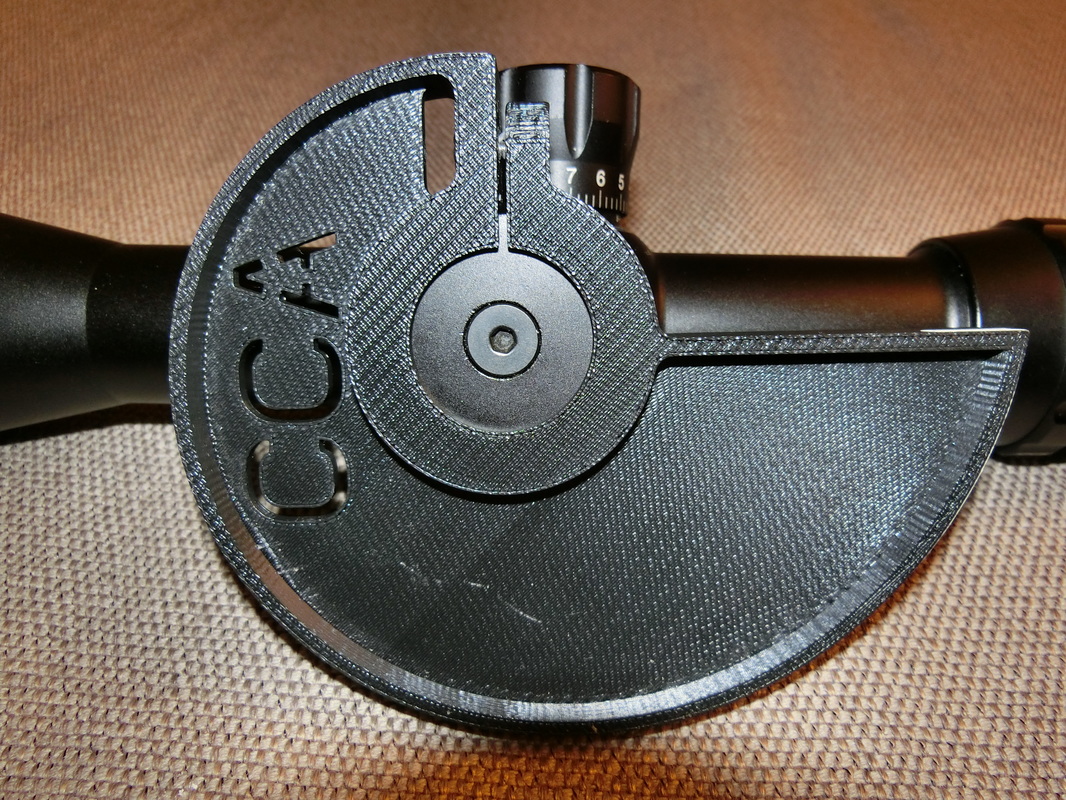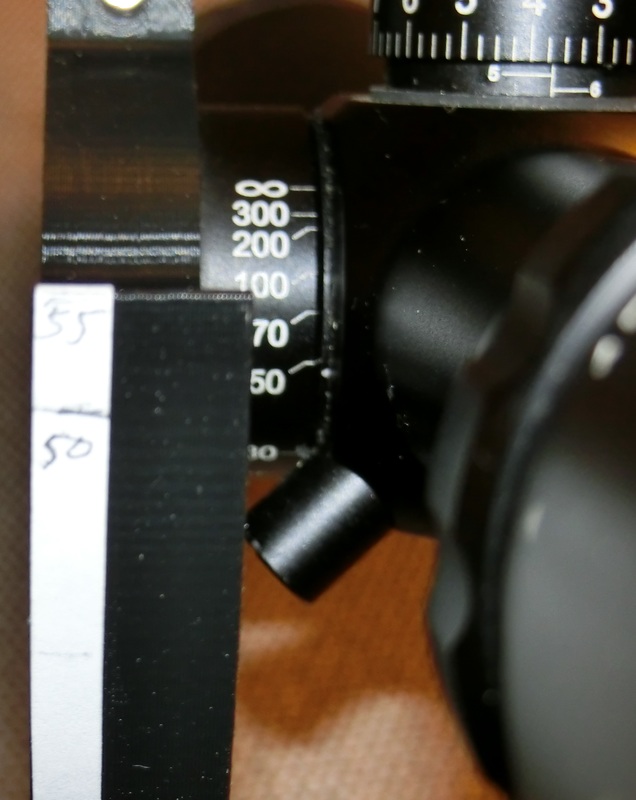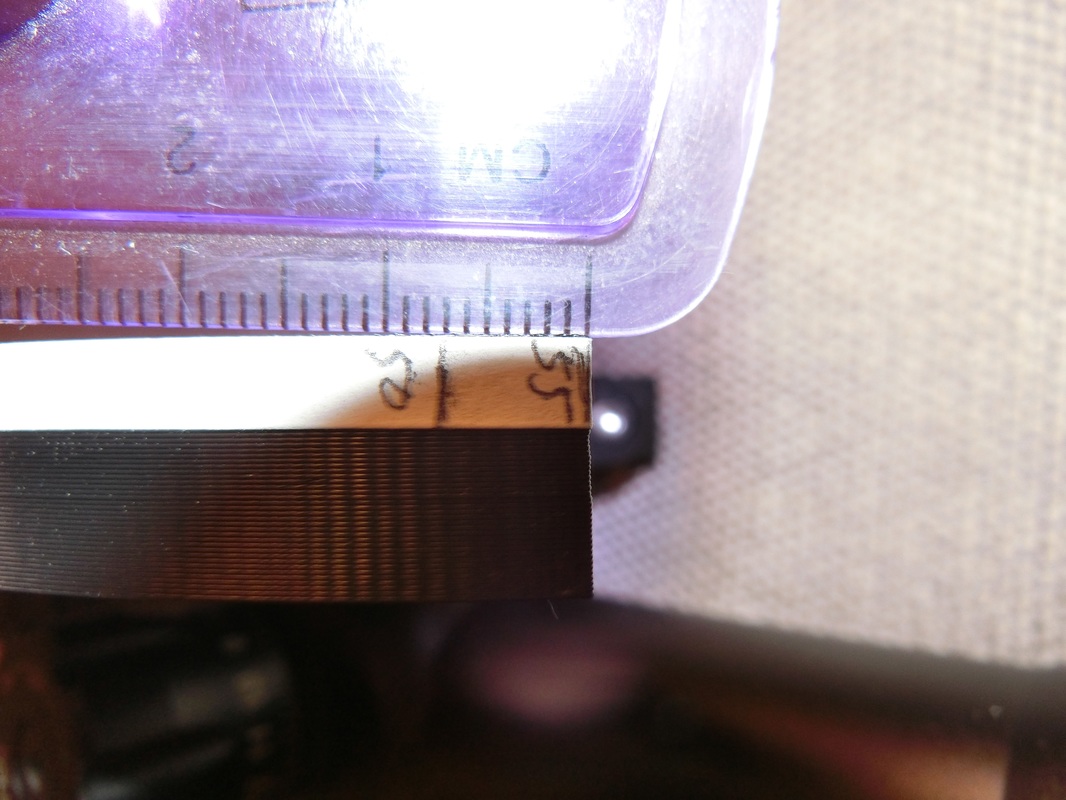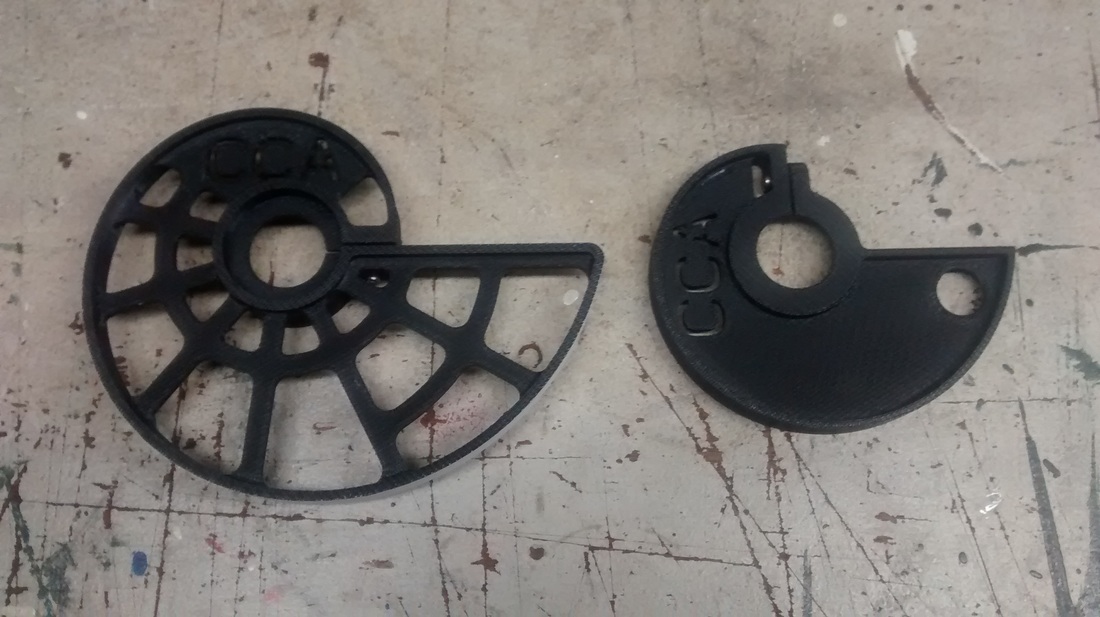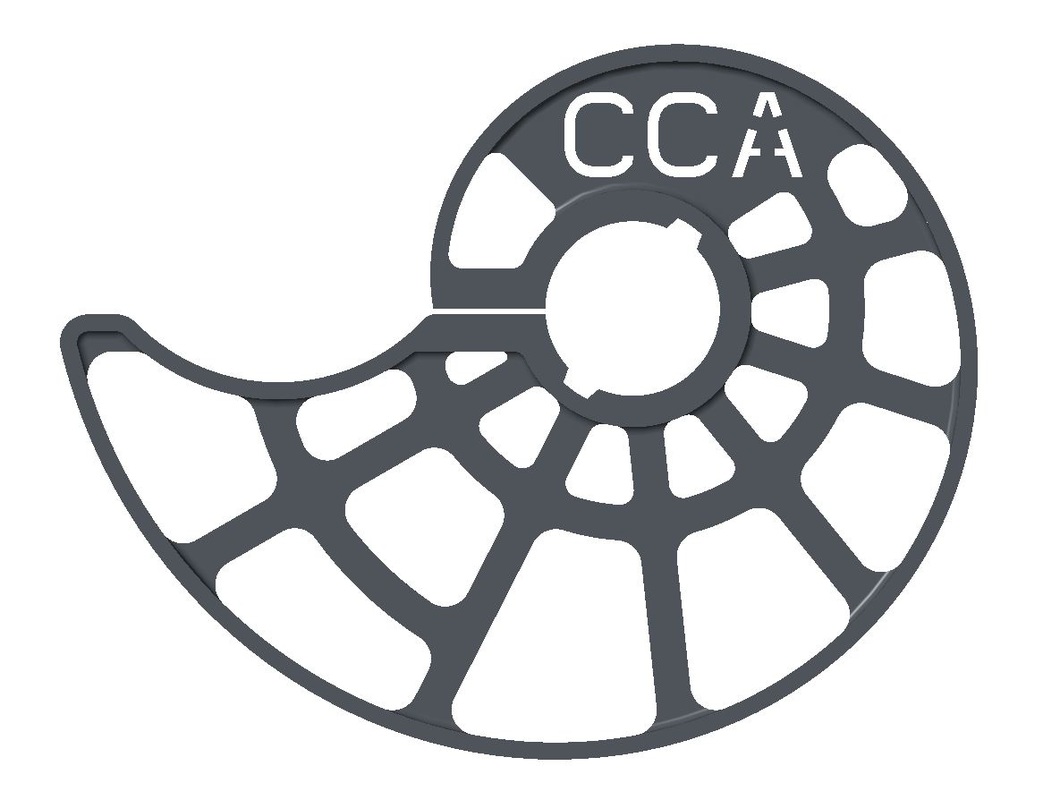The Nautilus Sidewheel is now available for :
AEON, Sightron SIII, Sidewinder 30 , SWFA sidefocus, Nikko Stirling NightEater & Diamond scopes, and Falcon T-50 !
One of the problems we find when we travel and shoot with our sidewheel scopes is the difficulty in packing a scope with a large sidewheel.
And yet, a large sidewheel is not really needed from 10 to about 35 yards. It is only at the 35 yards range that the marks in the tape of 3", and 4" sidewheels become too close to call accurately and with any consistency,
Some shooters use 5", 6" and even larger sidewheels, but between the weight and the leverage afforded to even small forces that act on large sidewheels and transmit that leveraged force directly to the sidewheel shaft, we have found that large wheels are somewhat fragile and become a weak link in the scope section of the system.
So, if it is not needed for short ranges, and only useful at longer ranges, ¿what should the shooters do?
A common solution is the "comma", another solution is a "T" bar added to a smaller wheel just for the longer ranges. But we thought that there had to be a better solution, and we think we found it in nature.
The Nautilus is a molusk that is a direct descendant of the mollusks that lived on earth's primitive seas about 500 million years ago. If they have not changed much in 500 million years, then that should surely mean that they are onto something, ¿right?
Actually, they are. Structurally speaking, the shell is one of the strongest, allowing the mollusk to dive to more than 3,000 ft. below.
The way it grows, is also very "organic", each chamber being sealed before the mollusk moves to his bigger house right next door.
And it is light. It withstands as much load per weight/section as some hardened glasses and steels.
The ancient Greeks were fascinated by it. The little animal grows in a proportion that was deemed the pattern of beauty, and therefore called "golden section". They fashioned their buildings and temples according to that geometric rule.
We, the modern technicians have calculus to work with. So that complex geometries can often be reduced to simple equations.
The growth pattern of the Nautilus follows a logarithmic pattern. And it so happens that the lenses of a telescope, when moved with uniformly spaced threads follow a tangential pattern that closely resembles the 1/x curve (see the entry on Understanding Scopes)
So, this curve seemed to be ideal for making a sidewheel.
It has a 3" diameter at the short ranges section, and a 6" diameter at the long end of the ranges. It would be easy to pack in a soft case for transport from lane to lane, it would also be easy to pack into a hard case for long travels. Being light it poses little threat to the delicate mechanism of the sidewheel shaft. Now the design phase really started.
And yet, a large sidewheel is not really needed from 10 to about 35 yards. It is only at the 35 yards range that the marks in the tape of 3", and 4" sidewheels become too close to call accurately and with any consistency,
Some shooters use 5", 6" and even larger sidewheels, but between the weight and the leverage afforded to even small forces that act on large sidewheels and transmit that leveraged force directly to the sidewheel shaft, we have found that large wheels are somewhat fragile and become a weak link in the scope section of the system.
So, if it is not needed for short ranges, and only useful at longer ranges, ¿what should the shooters do?
A common solution is the "comma", another solution is a "T" bar added to a smaller wheel just for the longer ranges. But we thought that there had to be a better solution, and we think we found it in nature.
The Nautilus is a molusk that is a direct descendant of the mollusks that lived on earth's primitive seas about 500 million years ago. If they have not changed much in 500 million years, then that should surely mean that they are onto something, ¿right?
Actually, they are. Structurally speaking, the shell is one of the strongest, allowing the mollusk to dive to more than 3,000 ft. below.
The way it grows, is also very "organic", each chamber being sealed before the mollusk moves to his bigger house right next door.
And it is light. It withstands as much load per weight/section as some hardened glasses and steels.
The ancient Greeks were fascinated by it. The little animal grows in a proportion that was deemed the pattern of beauty, and therefore called "golden section". They fashioned their buildings and temples according to that geometric rule.
We, the modern technicians have calculus to work with. So that complex geometries can often be reduced to simple equations.
The growth pattern of the Nautilus follows a logarithmic pattern. And it so happens that the lenses of a telescope, when moved with uniformly spaced threads follow a tangential pattern that closely resembles the 1/x curve (see the entry on Understanding Scopes)
So, this curve seemed to be ideal for making a sidewheel.
It has a 3" diameter at the short ranges section, and a 6" diameter at the long end of the ranges. It would be easy to pack in a soft case for transport from lane to lane, it would also be easy to pack into a hard case for long travels. Being light it poses little threat to the delicate mechanism of the sidewheel shaft. Now the design phase really started.
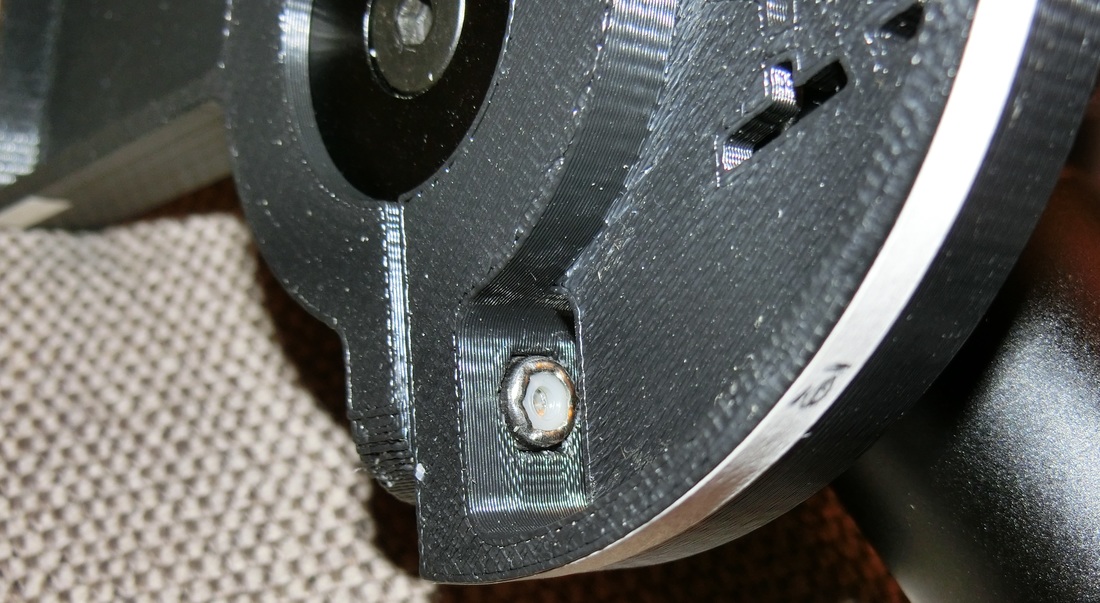
Another thing we disliked of the currently available sidewheels is the grub screws used for fixation. They are always a very weak link in the whole thing.
Not the Nautilus. The Nautilus tightens like a clamp, using the full strength of metal to metal and holding the nut captive in an hexagonal cavity. On the inside, the Nautilus has the scallops that the OEM knob has, so the whole assembly is as strong as the OEM.
The Nautilus sidewheel has been copyrighted in the general shape and in the attachment fixture.
At present, we have two models, the small model is ideal for:
AEON line of scopes whether they have a 12 or a 10 scallop knob
SWFA SS scopes (Sidewheel model, obviously)
These sell for $110 postpaid anywhere in the Con US.
The larger one was designed for the Sightron SIII and is now available for the Nikko Stirling NightEater and the Hawke Sidewinder 30 scopes, it starts at 3" diameter and goes up to 8" diameter.
At present, we have two models, the small model is ideal for:
AEON line of scopes whether they have a 12 or a 10 scallop knob
SWFA SS scopes (Sidewheel model, obviously)
These sell for $110 postpaid anywhere in the Con US.
The larger one was designed for the Sightron SIII and is now available for the Nikko Stirling NightEater and the Hawke Sidewinder 30 scopes, it starts at 3" diameter and goes up to 8" diameter.
These sell for $160 postpaid anywhere in the Con US.
To order, send us an EMail through the Contact Page.
Thanks for reading!
To order, send us an EMail through the Contact Page.
Thanks for reading!
